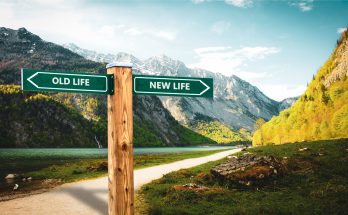I can’t be the only parent having fascinating conversations with my teenagers right now, as the world changes and history unfolds in front of our eyes.
My son, at 16, is an independent thinker. He weighs each issue individually, and actively resists popular opinions wherever they may fall. So when he read that the Theodore Roosevelt statue in front of the Museum of Natural History in NYC—where he spent many happy childhood days—was going to be relocated, and more important, removed from its prominent spot, he was PISSED.
This has gone too far, he said. He understood why Confederate statues were coming down, but he was angry about this one. Roosevelt was known as “the conservationist president,” he told me. He thought removing the statue was reactive and not thought through. “It’s just Roosevelt flanked by two people,” he said, and then told me all about Roosevelt. Turns out my son knows a lot about him.
I grew up in Canada, and never studied American history. My son is armed with a lot more knowledge than I have, plus he’s a history buff with a memory for details and an eye for analysis. He’s been like that since he was a little kid, able to piece together the big picture from the details. Even when I was interested in history classes in school, I often got lost in a swirl of dates and events, and lost sight of how they fit together as pieces of a larger puzzle. As a result, I haven’t always been a good sparring partner for him in these debates. Winging it was a lot easier when he was younger.
I suggested we look at a photo of the statue together, to see the “flanking” he was talking about. The statue features Roosevelt on horseback, and he is indeed flanked. On one side is a Black man, on the other side is an Indigenous American. I’ve seen the statue a million times without ever really looking at it.
To me, they looked like people who have been conquered and subjugated. He suggested they were allies, based more on his history knowledge than the image in front of us. I had him take note of where they were standing (unnaturally close to him and slightly behind), what they were wearing (no shirts), and what they were doing (standing, holding Roosevelt’s guns, while he sat).
We looked up the sculptor, James Earle Fraser, whose job was to sculpt what had already been designed by architect John Russell Pope. We looked up Roosevelt’s views on race, which were complicated—progressive perhaps, for his unenlightened time, but still problematic. To be honest, he was a man of many dichotomies, like being a conservationist and a hunter at the same time—which isn’t always a conflict, but can be.
My son was angry at the Museum’s reactive response. He felt that the very people entrusted with preserving history were jumping on a political bandwagon, and their public statement was irritatingly vague. I suggested we go beyond the PR statement. The very fact that they’re historians, in charge of the museum’s legacy, meant that (a) it was likely they had delved into every aspect of the statue’s history and meaning; and (b) they also had to consider whether or not they wanted to be REPRESENTED by that statue, in its prominent place on their steps. It’s the most iconic symbol of the museum, brought into pop culture focus by Robin Williams in Night at the Museum (which is a very fun movie, by the way).
I’m not here to write an essay about Roosevelt, James Fraser, or even John Russell Pope. But I am here to say that we all keep defaulting to our positions, and even when we think we aren’t, we still are.
I defaulted to “there must be a good reason,” and was willing to call it a day. My son defaulted to “people don’t understand the nuances of history.” We were both wrong. We were both doing what our current state of politics and social media are telling us to do: have a knee-jerk reaction. What happened instead, thanks to him pushing me into it, was a lot of research by both of us to understand both the intention of the original statue, the way it is seen today by both visitors to the museum and those who work there, and the complicated history of… everybody. There are scholars who say the statue shows racial unity, while other experts can just as easily prove it’s demonstrating racial hierarchy.
In the end, we both agreed that the statue should be moved, but that Roosevelt should still be honored for his work, especially as it’s so specifically essential to the Museum of Natural History itself. But we also both agreed to keep educating ourselves and to stop accepting the polarized points of view that have become our entire political dialogue. Look at “Defund the police.” The phrase itself makes people think it’s a call for anarchy without any law enforcement but is actually a detailed, thoughtful call for a deep examination of how budgets are created and spent and how we handle social problems and situations that come up daily in our society. People are arguing about it without even knowing what they’re fighting about.
When I was a kid, I espoused my parents’ political views. It was the 70s, we were Canadian liberals, and my parents were smart and eloquent. There was no social media or a 24-hour news cycle to contend with. Now, as a parent with two teenagers and a husband who has a completely different starting place from mine politically, religiously, and nationally, I find that all the slogans, headlines and pronouncements should all be the beginnings of conversations, not the ends. In a world full of people who have a great deal to say in the comments under headlines they haven’t clicked on, it’s our job as parents to make sure the opinions we’re stating in front of our kids, and each other, are based on knowledge, examination, and open-mindedness. This is a terrible year for us all and also a phenomenally wonderful one, as we more deeply examine the systems we’ve been so proud of—their intentions and inequalities, and the effects of both. It is a wondrous time of self-examination, of seeing the world through new eyes, and being open to what that might teach us. I’m guilty of forgetting that sometimes, and along with my teenager, will strive to do better.



